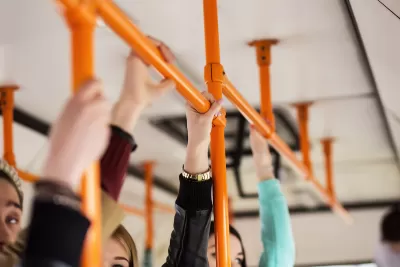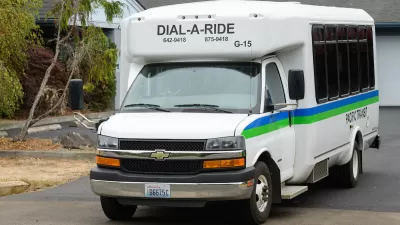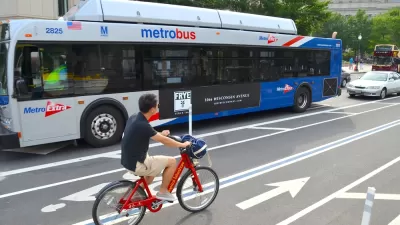Contrary to some arguments, public transit networks with higher government subsidies have higher ridership and more farebox revenue.

New research indicates that publicly subsidized transit systems are more efficient, writes Kea Wilson in Streetsblog USA. Regions with the highest subsidies also generate the most revenue from fares.
In a fascinating recent analysis, researchers found that metro areas that received more government subsidies per capita were more likely to run buses and trains with lots of passengers on board, rather than running inefficient, wasteful routes with just a few heavily subsidized riders per vehicle.
The analysis debunks the common argument that government subsidies fail to improve transit systems. According to the researchers, other studies often fail to account for regional transit networks that utilize more than one agency. “Instead, the new study looks at the simple ratio between how many miles transit passengers in the region collectively travel and how many miles transit vehicles in that region collectively travel, giving a clear, easy-to-understand picture of how crowded (or empty) subsided buses and trains are likely to be.”
The study shows that government subsidies for transit “seem to provide a strong foundation for transit networks to thrive — and ultimately, make significantly more money at the farebox than they would without support.”
FULL STORY: Study: Subsidizing Transit Actually Makes It More Efficient

Study: Maui’s Plan to Convert Vacation Rentals to Long-Term Housing Could Cause Nearly $1 Billion Economic Loss
The plan would reduce visitor accommodation by 25,% resulting in 1,900 jobs lost.

North Texas Transit Leaders Tout Benefits of TOD for Growing Region
At a summit focused on transit-oriented development, policymakers discussed how North Texas’ expanded light rail system can serve as a tool for economic growth.

Why Should We Subsidize Public Transportation?
Many public transit agencies face financial stress due to rising costs, declining fare revenue, and declining subsidies. Transit advocates must provide a strong business case for increasing public transit funding.

Dear Tesla Driver: “It’s not You, It’s Him.”
Amidst a booming bumper sticker industry, one writer offers solace to those asking, “Does this car make me look fascist?”

A Visual Celebration of Manhattan’s Chinatown Elder Community, Through Food
Lanterns, cafeteria trays, and community connection take center stage in this stunning photo essay.

How to Make US Trains Faster
Changes to boarding platforms and a switch to electric trains could improve U.S. passenger rail service without the added cost of high-speed rail.
Urban Design for Planners 1: Software Tools
This six-course series explores essential urban design concepts using open source software and equips planners with the tools they need to participate fully in the urban design process.
Planning for Universal Design
Learn the tools for implementing Universal Design in planning regulations.
City of Santa Clarita
Ascent Environmental
Institute for Housing and Urban Development Studies (IHS)
City of Grandview
Harvard GSD Executive Education
Toledo-Lucas County Plan Commissions
Salt Lake City
NYU Wagner Graduate School of Public Service





























